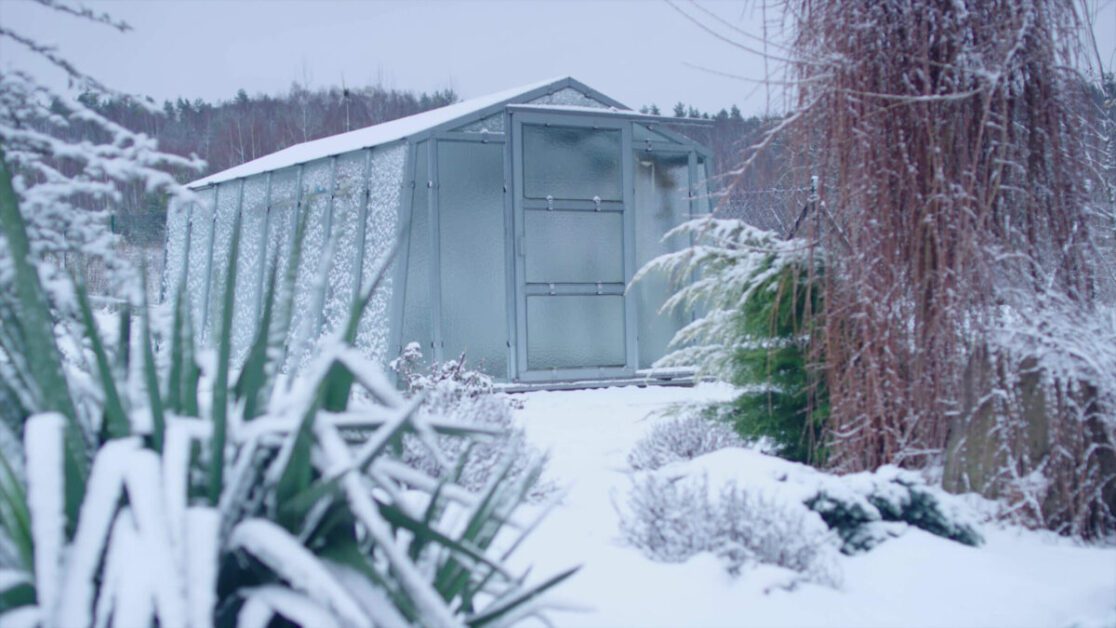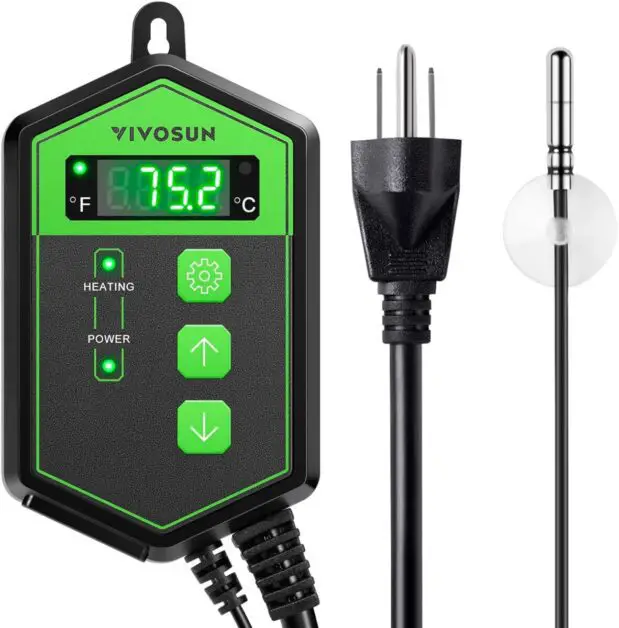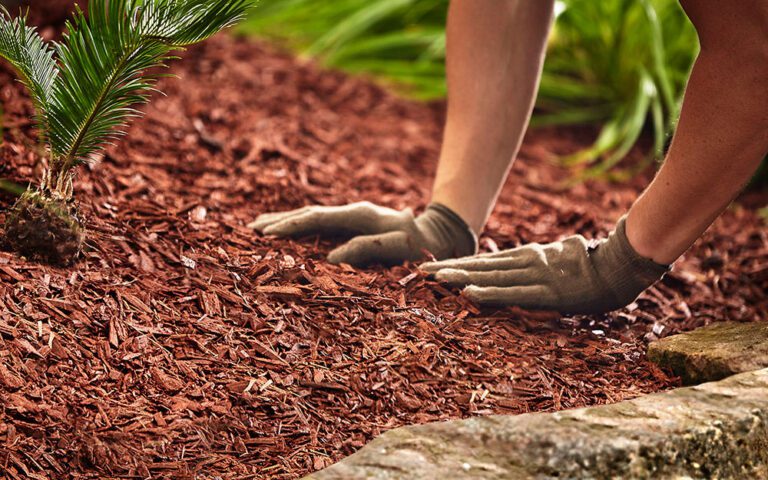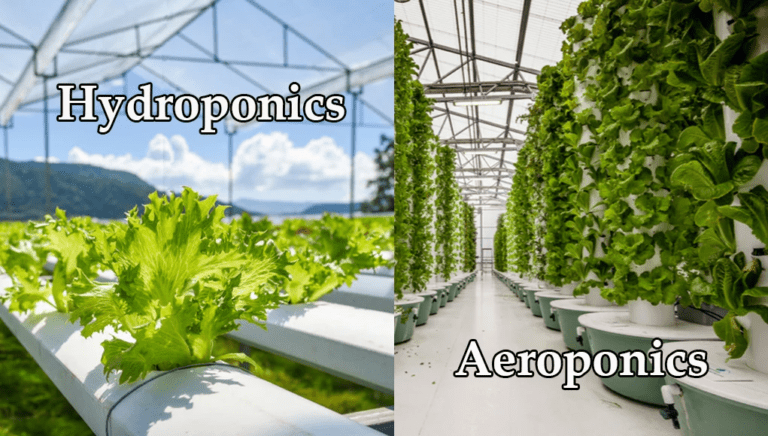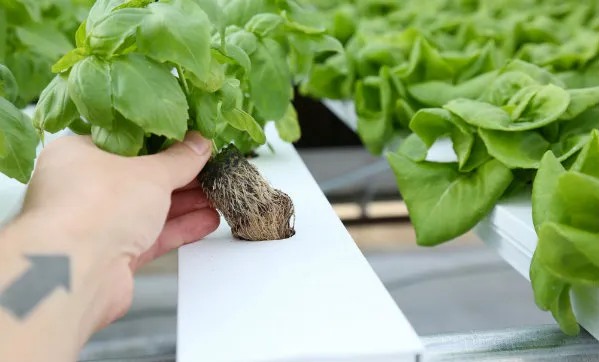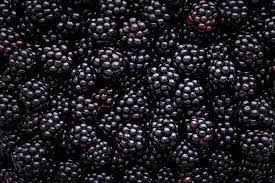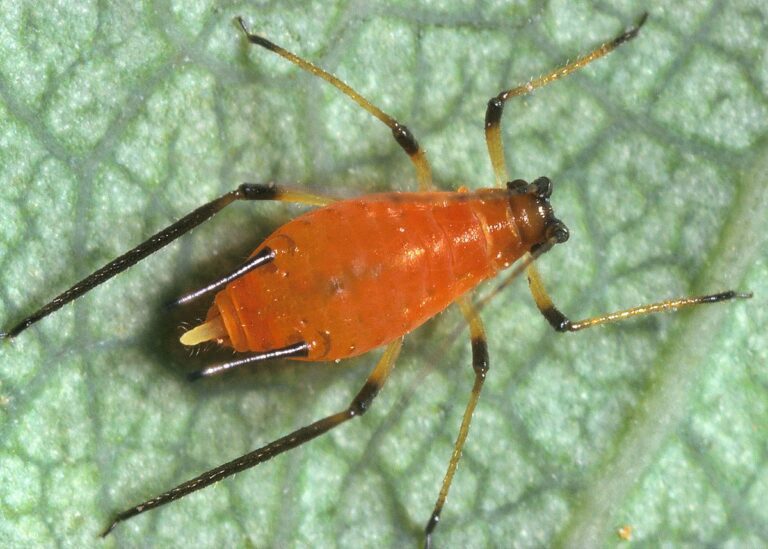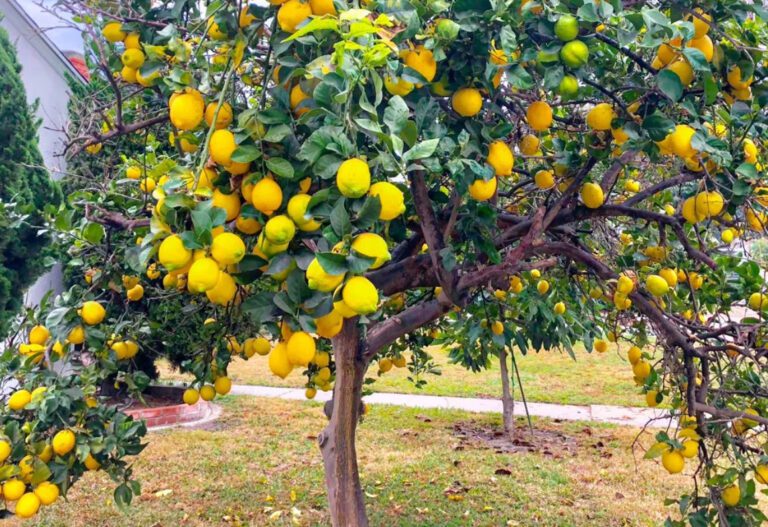Winter Hydroponics: The Essential Equipment You Need to Keep Your Garden Alive
As the chilly winds of winter settle in, many gardeners face the challenge of maintaining their beloved plants indoors. But fear not, for hydroponics offers a solution that defies the frosty grip of the season. Did you know that hydroponic gardening allows you to grow plants without soil, using only water and nutrients? It’s a game-changer for green thumbs craving year-round harvests. In this blog, we’ll explore the must-have equipment for your winter hydroponic setup. From grow lights to nutrient solutions, we’ll delve into the essentials that ensure your garden thrives, even when the world outside is blanketed in snow. Get ready to cultivate your indoor oasis and enjoy fresh produce all winter long!
Table of Contents
Understanding the Challenges of Winter Gardening
Winter gardening can be a challenging endeavor for even the most experienced gardeners. The colder temperatures, shorter days, and harsh weather conditions present unique obstacles that must be overcome in order to maintain a thriving garden.
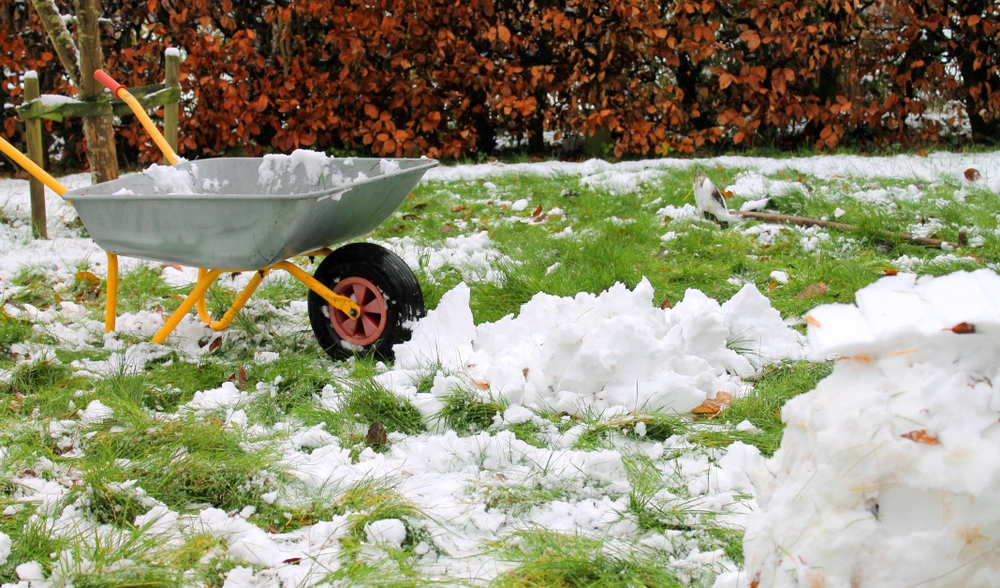
- Artificial Lighting for Winter Gardening:
- Insufficient Sunlight: During winter, natural sunlight is limited, affecting plant growth. Artificial lighting compensates for this by providing consistent illumination.
- Types of Artificial Lights:
- Fluorescent Lights: These are cost-effective and suitable for seedlings and young plants. However, they have lower intensity.
- LED Grow Lights: Energy-efficient and customizable, LED lights emit specific wavelengths for optimal plant growth.
- High-Intensity Discharge (HID) Lights: HID lamps (metal halide and high-pressure sodium) offer intense light but generate heat.
- Placement and Duration:
- Position lights close to plants (6-12 inches) to maximize intensity.
- Maintain a consistent light duration (12-16 hours/day) to mimic natural day-night cycles.
- Temperature Control in Winter Gardens:
- Cold Stress: Low temperatures hinder plant metabolism, affecting growth and yield.
- Heating Methods:
- Greenhouse Heaters: Gas, electric, or propane heaters maintain warmth. Install them strategically for even distribution.
- Soil Heating Cables: Buried cables warm the root zone, promoting healthy root development.
- Insulation: Cover plants with frost blankets or row covers during extreme cold.
- Monitoring and Adjusting:
- Use thermometers to track indoor and outdoor temperatures.
- Adjust heating systems based on plant requirements and external weather conditions.
Remember, successful winter gardening involves a balance of light, temperature, and care. Adapt your strategies based on the specific needs of your plants! 🌱🌿
The Mr. Heater F232000 indoor-safe portable propane heater has been a reliable addition to my greenhouse setup. Its efficient heating capability quickly warms up the space, ensuring that my plants stay cozy and protected from the cold during chilly nights or cooler seasons. The portability of this heater is particularly convenient, allowing me to easily move it around to different areas of the greenhouse as needed, ensuring even distribution of heat and maintaining consistent temperatures throughout.
However, I’ve noticed that while it works well for smaller to medium-sized greenhouses, it may struggle to adequately heat larger structures. This limitation means that I sometimes need to supplement with additional heating sources or position the heater strategically to maximize its effectiveness. Additionally, as with any propane-powered appliance, I have to be mindful of ventilation requirements and ensure proper airflow to prevent the buildup of carbon monoxide. Overall, though, the Mr. Heater F232000 offers reliable warmth and convenience, making it a valuable asset for maintaining optimal growing conditions in my greenhouse.
- Indoor Safe: The Mr. Heater F232000 indoor-safe portable propane heater is designed to be used safely indoors, providing warmth without the need for electricity, making it ideal for greenhouse use.
- Portable: This heater is lightweight and compact, making it easy to move around and position wherever heat is needed within the greenhouse, offering flexibility in heating arrangements.
- Efficient Heating: With its 4,000-9,000 BTU heating capacity, this heater can effectively warm small to medium-sized greenhouses, maintaining a comfortable temperature for plants even in colder weather.
- Easy to Use: It features a simple ignition system and adjustable heat settings, allowing for quick and hassle-free operation, even for those unfamiliar with propane heaters.
- Versatile: Apart from greenhouse use, this heater can also be used for camping, workshops, and other outdoor activities, providing reliable heating wherever it’s needed.
- Limited Coverage: While suitable for small to medium-sized greenhouses, the heating capacity of this propane heater may not be sufficient for larger structures, requiring multiple units for adequate coverage.
- Propane Dependency: As a propane-powered heater, it requires access to propane fuel, which may need to be refilled or replaced regularly, adding to operational costs and potentially causing inconvenience if fuel runs out unexpectedly.
- Ventilation Required: While advertised as indoor safe, proper ventilation is still necessary when using propane heaters to prevent the buildup of carbon monoxide and ensure air quality within the greenhouse.
- Safety Concerns: While equipped with safety features such as an auto-shutoff mechanism, users should exercise caution and follow safety guidelines to prevent accidents or hazards associated with propane heating.
- Noise: Some users may find the fan noise of this heater to be noticeable, especially in quieter environments like greenhouses, which could be a minor nuisance for some individuals.
The Role of Hydroponics in Overcoming Winter Gardening Challenges
Hydroponics, a soilless method of gardening, plays a crucial role in overcoming the challenges of winter gardening. With traditional gardening methods, the cold temperatures and frost can pose significant obstacles to plant growth and survival. However, hydroponics provides a controlled environment that allows plants to thrive regardless of the external conditions.
control temperature and lighting
One of the key advantages of hydroponics in winter gardening is the ability to control temperature and lighting. In traditional gardens, the fluctuating temperatures can cause stress to plants and hinder their growth. But with hydroponics, growers have the power to maintain stable temperatures, ensuring optimal conditions for plant development.
artificial grow lights
Additionally, the use of artificial grow lights allows for extended periods of light, compensating for the shorter daylight hours during winter. This supplementary lighting not only promotes healthy growth but also enables year-round cultivation, giving gardeners the opportunity to grow their favorite plants even in the colder months.
By harnessing the power of hydroponics, gardeners can overcome the limitations imposed by winter and continue enjoying the benefits of fresh produce throughout the year. With precise control over temperature and lighting, hydroponic systems provide an ideal environment for plants to thrive, ensuring a bountiful harvest regardless of the season.
In the upcoming sections, we will delve deeper into the specific equipment, techniques, and strategies that can empower gardeners to make the most of hydroponics in winter gardening. Stay tuned as we explore the fascinating world of winter hydroponics and how it can revolutionize your gardening experience.
Essential Equipment for Winter Hydroponics
When it comes to winter hydroponics, having the right equipment is essential for ensuring the success of your indoor garden. Here are some key pieces of equipment that you’ll need to consider:
1. Grow Lights: Since natural sunlight is limited during the winter months, providing adequate lighting is crucial for your plants’ growth. LED grow lights are the go-to choice for hydroponics due to their energy efficiency and ability to provide the specific light spectrum that plants need. Look for lights with a high PAR (Photosynthetically Active Radiation) output to ensure optimal photosynthesis.

2. Climate Controllers: Maintaining the ideal temperature and humidity levels is vital for plant health in winter hydroponics. Investing in a climate controller will help you create and maintain the perfect growing conditions. These controllers can monitor and adjust temperature, humidity, and CO2 levels, ensuring that your plants thrive even when it’s cold outside.
3. Nutrient Delivery Systems: In hydroponics, the nutrients for your plants are delivered through a nutrient solution. To make sure your plants receive the necessary nutrients in a controlled manner, you’ll need a reliable nutrient delivery system. This can include pumps, hoses, and appropriate containers for mixing and circulating the nutrient solution.
4. pH Tester and Adjusters: Maintaining the right pH level is crucial for nutrient absorption in hydroponic systems. pH testers are essential for monitoring the acidity or alkalinity of the nutrient solution. If the pH deviates from the optimal range, pH adjusters can be used to bring it back to the desired level, ensuring your plants can absorb nutrients effectively.
By equipping yourself with these essential tools, you’ll be well-prepared to overcome the challenges of winter gardening. In the next section, we’ll dive into the specifics of adequate lighting solutions for winter hydroponics, guiding you on selecting the right grow lights for optimal plant growth in indoor environments.
Adequate Lighting Solutions for Winter Hydroponics
Proper lighting solutions are crucial for successful winter hydroponics. As the days become shorter and natural sunlight diminishes, plants rely heavily on artificial lighting to meet their energy needs. When it comes to choosing the right lighting for your winter hydroponic garden, there are a few key factors to consider.

- Light Intensity:
- Importance: Adequate light intensity is crucial for photosynthesis. In winter, when natural sunlight is scarce, artificial lighting becomes essential.
- HID Lights (MH and HPS): These high-intensity discharge lamps emit strong, concentrated light. They are popular among hydroponic gardeners for their ability to provide sufficient intensity even during dark winter months.
- Light Spectrum:
- Blue Light: Essential for vegetative growth, promoting leaf development and overall plant health.
- Red Light: Crucial for flowering and fruiting stages. It triggers flowering hormones and enhances fruit production.
- LED Grow Lights: These energy-efficient lights allow precise control over the light spectrum. Gardeners can customize the balance of blue and red wavelengths to meet specific plant requirements.
Remember to strike a balance between intensity and spectrum to optimize plant growth during winter! 🌱🌿By carefully selecting lighting solutions that offer sufficient intensity and the right spectrum, gardeners can ensure their plants receive the optimal light conditions required for robust growth and plentiful harvests in winter hydroponics.
Selecting the Right Grow Lights for Optimal Plant Growth
When it comes to selecting the right grow lights for optimal plant growth, there are several factors to consider.
- Light Spectrum:
- Plants have varying light requirements throughout their growth cycle.
- Choose grow lights that emit the appropriate spectrum for your specific plants.
- Blue light encourages vegetative growth, while red light stimulates flowering and fruiting.
- Light Intensity:
- Light intensity is measured in lumens or lux.
- Different plants have different intensity needs.
- Opt for grow lights that match your plants’ intensity requirements.
- Inadequate light can result in weak growth, while excessive light may cause leaf damage.
- Maintain a balance to ensure optimal growth conditions for your plants.
The following table explain different types of grow lights for winter hydroponic growth
| Grow Light Type | Key Characteristics |
|---|---|
| 1. High-Intensity Discharge (HID) Lights | – High light intensity |
| – Suitable for larger growing areas | |
| 2. Light Emitting Diode (LED) Lights | – Energy-efficient |
| – Spectrum can be tailored for specific crops | |
| 3. Fluorescent Lights (T5, T8, T12) | – Cost-effective and widely available |
| – Suitable for smaller or low-light plants | |
| 4. Metal Halide (MH) Lights | – Balanced spectrum for vegetative growth |
| – Good for leafy greens and herbs | |
| 5. High-Pressure Sodium (HPS) Lights | – Promotes flowering and fruiting |
| – Efficient for larger plants | |
| 6. Ceramic Metal Halide (CMH) Lights | – Balanced spectrum with improved efficiency |
| – Suitable for a variety of crops | |
| 7. Full Spectrum LED Lights | – Mimics natural sunlight with a full spectrum |
| – Suitable for various growth stages | |
| 8. Supplemental UVB Lights | – Enhances certain plant processes |
| – Used as a supplement with other grow lights |
How to Choose the Ideal Light Spectrum for Winter Hydroponics
Choosing the ideal light spectrum for winter hydroponics is a crucial step in ensuring optimal plant growth and development. Different plants have varying light requirements, and providing the right spectrum can greatly enhance their overall health and productivity.
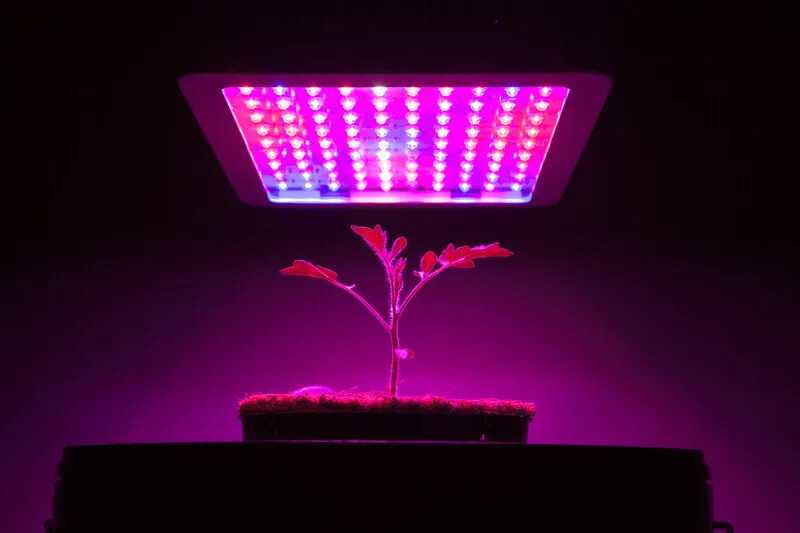
- Full Spectrum Lighting:
- Mimics Natural Sunlight: Full spectrum lights cover the entire visible light spectrum, from blue to red. They provide a balanced range of wavelengths similar to sunlight.
- Benefits:
- Supports overall plant growth, including vegetative development.
- Ideal for leafy greens, herbs, and plants in various growth stages.
- Application: Use full spectrum lights in hydroponic systems to ensure consistent and comprehensive illumination.
- Targeted Spectrum Lighting:
- Focused Wavelengths: Targeted spectrum lights emphasize specific wavelengths that benefit particular plant characteristics.
- Examples:
When selecting the ideal light spectrum, it is crucial to consider the specific needs of your plants. Research the light requirements of different plant species and adjust the light spectrum accordingly. Utilizing a combination of full spectrum and targeted spectrum lighting can provide the best results, allowing you to maximize your winter hydroponic harvest.
Temperature Control Systems for Maintaining Ideal Growing Conditions
Temperature control is crucial for maintaining ideal growing conditions in winter hydroponics. Cold temperatures can hinder plant growth and cause damage to delicate plant tissues. To ensure optimal growth, it is important to implement reliable temperature control systems in your hydroponic garden.
programmable thermostat
One effective method for controlling temperature is using a programmable thermostat. This device allows you to set specific temperature ranges and automatically adjusts heating or cooling systems accordingly. By maintaining a stable temperature, plants can thrive and reach their full potential. Additionally, utilizing a thermostat can help conserve energy and minimize heating costs.
- In addition to a programmable thermostat, insulation is another key component in temperature control.
- Insulating your hydroponic system and growing area helps maintain a consistent temperature by preventing heat loss.
- Common insulation materials include reflective foils, polyethylene bubble wrap, or even insulated panels.
- Properly insulating your hydroponic setup can create a microclimate that shields plants from extreme temperature fluctuations, ensuring a stable and conducive environment for growth.
As an avid greenhouse enthusiast, I’ve found the VIVOSUN thermostat to be an invaluable addition to my gardening setup. Its precise temperature control has allowed me to create optimal growing conditions for my plants, ensuring they thrive year-round. The programmable settings are a game-changer, allowing me to customize temperature ranges and schedules to suit the specific needs of different plant varieties or growth stages. Whether it’s adjusting for seed germination, vegetative growth, or flowering, this thermostat provides the flexibility I need to maintain ideal conditions.
However, I’ve encountered a few drawbacks with this thermostat. Firstly, I’ve found that it’s only compatible with certain heating or cooling devices, which limits its versatility in controlling a wider range of equipment within my greenhouse. Additionally, while generally reliable, I’ve experienced occasional durability issues, such as sensor inaccuracies over time. Despite these minor setbacks, the VIVOSUN thermostat has significantly enhanced my gardening experience, offering intuitive controls and precise temperature regulation to support healthy plant growth. Overall, it’s a valuable tool for any greenhouse enthusiast looking to optimize their growing environment.
✔ Programmable Settings: Its programmable functionality enables users to set specific temperature ranges and schedules, providing customizable control over heating and cooling cycles to meet the needs of various plants or applications.
✔ User-Friendly Interface: With an intuitive interface and easy-to-use controls, this thermostat simplifies the process of managing temperature settings, making it suitable for both novice and experienced greenhouse enthusiasts.
❌ Durability Concerns: While generally reliable, there have been occasional reports of durability issues, such as malfunctions or sensor inaccuracies over time. Users should ensure proper maintenance and handling to mitigate these potential issues and prolong the lifespan of the thermostat.
❌ Price Point: Compared to basic thermostats, the VIVOSUN programmable thermostat may come at a higher price point, which could be a consideration for budget-conscious greenhouse owners. However, its advanced features and functionality may justify the investment for those seeking precise temperature control and automation capabilities.
Evaluating Different Heating Options for Winter Hydroponics
When it comes to winter hydroponics, selecting the right heating option is crucial for maintaining ideal growing conditions. With the cold temperatures outside, it’s important to ensure that your plants receive the warmth they need to thrive. There are several heating options available, each with their own advantages and considerations.
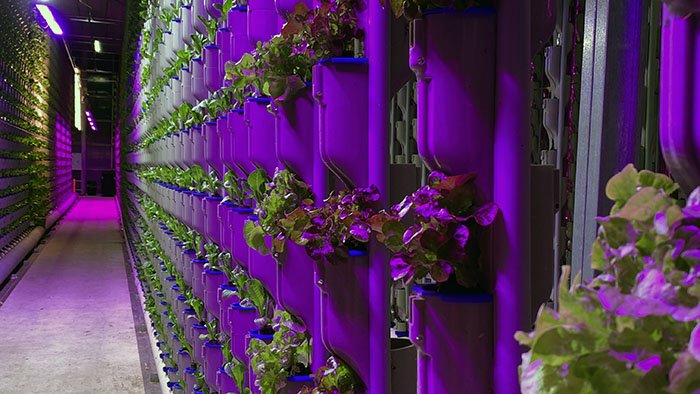
- Grow Lights Emitting Infrared Radiation:
- Infrared radiation emitted by grow lights penetrates plant tissues, promoting growth.
- Ideal for plants requiring specific temperature ranges, like tropical varieties.
- Helps create a drier environment, reducing the risk of fungal diseases.
- Heating Mats or Cables:
- Placed underneath containers or trays, providing consistent heat to roots.
- Promotes healthy root development and nutrient uptake.
- Particularly beneficial for smaller hydroponic setups.
- Easily adjustable to maintain desired temperature range.
It’s important to carefully evaluate the heating options available and choose the one that best suits your specific needs and budget. Factors to consider include the size of your hydroponic system, the types of plants you are growing, and the temperature requirements of those plants. By investing in the right heating option, you can create a conducive environment for year-round hydroponic gardening success.
Humidity Control: Importance and Methods for Winter Hydroponics
Maintaining proper humidity levels is crucial for successful winter hydroponics. As the outside temperature drops, the air tends to become drier, which can have a detrimental impact on plant health and growth. Adequate humidity control ensures that plants receive the necessary moisture to thrive in the controlled indoor environment.
- Low Humidity Challenges:
- Water Stress: Insufficient humidity leads to water stress in plants, affecting growth and nutrient absorption.
- Symptoms: Stunted growth, wilting, and nutrient deficiencies.
- Solution: Increase humidity to alleviate stress.
- Excessive Humidity Risks:
- Pathogens and Mold: High humidity encourages the growth of harmful pathogens and mold.
- Disease Risk: Increased humidity can lead to diseases within the hydroponic system.
- Prevention: Maintain optimal humidity levels to avoid these risks.
- Methods for Humidity Control in Winter Hydroponics:
- Humidifiers and Foggers:
- Function: Add moisture to the air by releasing fine water droplets or mist.
- Adjustability: Gardeners can regulate humidity levels as needed.
- Shade Covers:
- Purpose: Reduce evaporation by providing shade.
- Application: Cover plants or growing areas to maintain humidity.
- Misting Systems:
- Effect: Spraying water intermittently helps maintain humidity.
- Placement: Install misting systems strategically within the growing environment.
- Humidifiers and Foggers:
Remember to monitor humidity levels regularly and adapt your methods based on plant requirements. Happy winter gardening! 🌱🌿
Nutrient Delivery and Management
When it comes to winter hydroponics, nutrient delivery and management are crucial aspects to consider for successful plant growth. During the winter months, plants have different nutrient requirements compared to other seasons due to changes in temperature, humidity, and lighting conditions. Therefore, it is essential to provide the right balance of nutrients to support optimal plant growth and development.

Plant-Specific Needs: Consider the growth stage, plant types, and individual nutrient requirements.
Regular Testing: Test nutrient solution periodically to ensure plants receive essential elements.
Adjustment: Modify nutrient concentrations based on test results and plant responses.
Importance: pH affects nutrient availability and uptake.
Optimal Range: Maintain pH within the appropriate range (usually 5.5 to 6.5 for hydroponics).
Testing and Adjustment: Regularly monitor pH using testing kits and adjust as needed.
By paying close attention to nutrient delivery and management in winter hydroponics, gardeners can create an environment that supports healthy plant growth and maximizes yield. Taking the time to understand the specific nutrient requirements of plants, regularly testing and adjusting nutrient solutions, and carefully monitoring and adjusting pH levels will contribute to successful winter gardening in a hydroponic system.
Nutrient Solutions: Formulating the Perfect Balance for Winter Growth
During the winter months, maintaining adequate nutrient levels in hydroponic systems becomes even more crucial for the optimal growth of plants. With the challenging environmental conditions that winter brings, it is essential to formulate nutrient solutions that provide the perfect balance of essential elements required for plant growth.
Formulating Nutrient Solutions:
- Ensure plants receive necessary macro and micronutrients for winter growth.
- Include elements like nitrogen, phosphorus, potassium, calcium, magnesium, and trace elements such as iron, zinc, and manganese.
- Adjust composition based on individual plant requirements, considering reduced light and temperature levels.
Maintaining pH Levels:
- pH level of the nutrient solution is critical for nutrient availability and root absorption.
- Most plants prefer slightly acidic pH (5.5 to 6.5).
- Different plants have specific pH preferences.
- Adjust nutrient solution pH accordingly to meet individual plant requirements.
The folllowing table explain about the different nutrient solutions for winter hydroponic growth:
| Nutrient | Function | Optimal Range (ppm) | Key Sources |
|---|---|---|---|
| Nitrogen (N) | – Promotes overall plant growth and photosynthesis. | 150-200 | Nitrate-based fertilizers, ammonium nitrate |
| Phosphorus (P) | – Enhances root development and energy transfer. | 50-80 | Phosphate-based fertilizers |
| Potassium (K) | – Supports cold tolerance, water uptake, and fruit quality. | 150-200 | Potassium nitrate, potassium sulfate |
| Calcium (Ca) | – Strengthens cell walls and aids in nutrient transport. | 100-150 | Calcium nitrate, calcium chloride |
| Magnesium (Mg) | – Essential for chlorophyll formation and enzyme activation. | 30-50 | Magnesium sulfate, magnesium nitrate |
| Sulfur (S) | – Important for amino acid and protein synthesis. | 20-30 | Epsom salt (magnesium sulfate) |
| Iron (Fe) | – Necessary for chlorophyll production and photosynthesis. | 2-5 | Chelated iron compounds, iron sulfate |
| Manganese (Mn) | – Participates in enzyme activation and nutrient absorption. | 1-2 | Manganese sulfate, manganese chelates |
| Zinc (Zn) | – Aids in enzyme activation and carbohydrate metabolism. | 0.5-1 | Zinc sulfate, zinc chelates |
| Copper (Cu) | – Essential for enzyme activities and overall plant growth. | 0.1-0.5 | Copper sulfate, copper chelates |
| Molybdenum (Mo) | – Facilitates nitrogen metabolism and enzyme activation. | 0.01-0.1 | Sodium molybdate, ammonium molybdate |
| Boron (B) | – Involved in cell division and carbohydrate transport. | 0.5-1 | Boric acid, borax |
To ensure the perfect balance of nutrients during winter, regular monitoring and testing of the nutrient solution are essential. This can be done through the use of pH meters, electrical conductivity (EC) meters, and nutrient testing kits. Monitoring and adjusting the nutrient solution as necessary will help prevent deficiencies or toxicities that could hinder plant growth and development.
Overall, by formulating nutrient solutions that consider the specific needs of plants during the winter months, gardeners can ensure healthy, vibrant growth even in the most challenging conditions.
Managing PH Levels in Winter Hydroponics
Maintaining optimal pH levels is crucial for the success of winter hydroponics. The pH level of a hydroponic system refers to the acidity or alkalinity of the nutrient solution that the plants are grown in. In winter, when plants are already under stress due to colder temperatures, any fluctuations in pH can further hinder their growth and development.
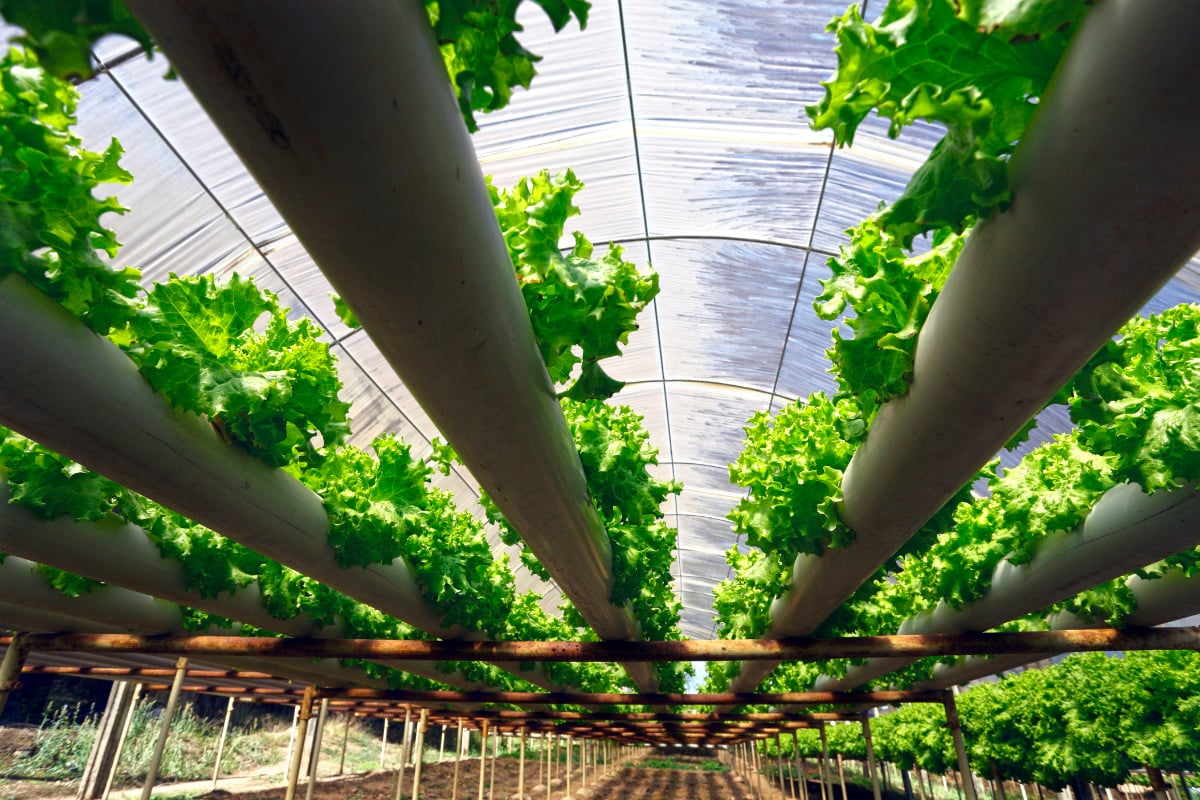
- Optimal pH Range:
- Most hydroponic plants thrive within a pH range of 5.5 to 6.5.
- Outside this range, nutrient uptake can be compromised, leading to deficiencies or toxicities.
- Adjusting pH:
- pH-Up and pH-Down Solutions:
- These commercial products allow precise pH adjustments.
- Follow the manufacturer’s instructions carefully.
- Gradual changes prevent abrupt pH swings.
- Buffering Agents:
- Stabilize pH levels in the hydroponic system.
- Maintain consistency for plant nutrient absorption.
- pH-Up and pH-Down Solutions:
Remember, maintaining the right pH balance ensures your hydroponic plants receive the nutrients they need for robust growth! 🌱🌿
The Role of Oxygenation in Winter Hydroponics
Oxygenation plays a crucial role in the success of winter hydroponics systems. During this season, plants rely heavily on oxygen to maintain their metabolic processes, nutrient uptake, and overall vitality. In hydroponic systems, where plants are grown without soil, the importance of oxygenation is even more significant.
- Understanding the Impact of Colder Temperatures:
- Colder temperatures in winter can reduce oxygen levels in water solutions.
- This decrease in oxygen can stress plants and hinder their growth.
- Importance of Oxygenation:
- Adequate oxygenation in hydroponic setups is crucial for promoting plant health and productivity.
- Incorporating Air Stones or Diffusers:
- Introduce air stones or diffusers into the nutrient solution.
- These devices release small air bubbles, creating an oxygen-rich environment for roots.
- Regular Monitoring and Adjustment:
- Monitor dissolved oxygen levels in the water solution.
- Adjust aeration as needed to maintain optimal oxygen balance throughout the winter season.
By understanding the role of oxygenation in winter hydroponics, gardeners can create a favorable environment for their plants’ growth and development. With proper oxygenation, plants can thrive despite the challenges presented by the season, ensuring a successful and fruitful winter hydroponics experience.
Protecting Your Garden from the Elements
Gardening in the winter can be a challenging task, as the elements can pose potential risks to your plants. However, with the right precautions and protective measures, you can ensure that your garden thrives even in the harshest conditions.
- Investing in Insulation and Enclosure Solutions:
- Insulation and enclosure strategies protect your garden from harsh elements.
- Importance of Insulation:
- Insulation maintains a stable and favorable environment for plants.
- Shields plants from extreme temperatures, wind, and frost.
- Using Bubble Wrap or Horticultural Fleece:
- Cover plants with bubble wrap or horticultural fleece to provide extra protection.
- These materials act as barriers, trapping heat and preventing cold air from reaching plants.
- Consider Building a Greenhouse or Cold Frame:
- Construct a greenhouse or cold frame for a controlled environment.
- Provides protection from harsh weather conditions.
- Preventing Frost Damage:
- Frost can harm plant cells, causing wilting, discoloration, and death.
- Use techniques like frost blankets or frost-free containers to prevent frost damage.
- Strategic Plant Positioning:
- Position cold-sensitive plants closer to walls or structures for added protection from chilling winds.
Overall, by implementing insulation and enclosure solutions, as well as taking necessary measures to prevent frost damage, you can effectively safeguard your garden from the unpredictable and harsh elements of winter.
Insulation and Enclosure Solutions for Winter Hydroponics
Insulation and enclosure solutions are crucial for maintaining optimal growing conditions in winter hydroponics. As temperatures drop, it becomes necessary to protect plants from the harsh cold and frost. One effective method is to use insulated enclosures, such as polyethylene or PVC structures. These enclosures create a controlled microclimate for the plants, shielding them from extreme temperatures and wind.
- Insulating Materials:
- Bubble Wrap or Reflective Foil: Apply these materials to the interior walls of the enclosure.
- Purpose: Create an additional layer of insulation to trap heat and prevent temperature fluctuations.
- Installation: Ensure proper coverage of all sides and corners to minimize heat loss.
- Supplemental Heating:
- Heaters or Heating Mats: Install these devices within the enclosed area.
- Function: Provide consistent warmth to maintain the desired temperature range.
- Monitoring: Regularly check the temperature and adjust heating as needed to avoid overheating or sudden fluctuations.
By implementing insulation and enclosure solutions, gardeners can create a protective environment for their hydroponic plants during the winter months. A well-insulated and enclosed system helps to maintain a stable temperature, safeguarding the plants from freezing temperatures and ensuring healthy growth. It is important to carefully plan and invest in appropriate insulation materials and enclosures to create an effective and efficient winter gardening setup.
Protecting Plants from Frost and Cold Temperatures
In order to protect plants from frost and cold temperatures during the winter season, it is essential to take proactive measures. Firstly, consider using protective coverings such as frost blankets or row covers. These materials act as a barrier against extreme temperatures, creating a microclimate that can help shield plants from frost damage.
- Utilizing Mulch for Insulation:
- Mulching around plant bases prevents soil freezing and protects roots.
- Organic materials like straw, leaves, or wood chips serve as effective mulch options.
- Applying Mulch Effectively:
- Ensure mulch is applied in a thick layer, at least a few inches deep, for adequate insulation.
- Monitoring Weather Forecasts:
- Keep track of upcoming weather conditions, especially freezing temperatures.
- Taking Precautionary Measures:
- Move potted plants indoors or to a sheltered location before freezing temperatures occur.
- Consider Greenhouses or Cold Frames:
- Greenhouses or cold frames provide controlled environments for plants.
- These structures offer protection from winter conditions while allowing sunlight to reach plants.
- Ventilating Greenhouses or Cold Frames:
- Remember to ventilate structures during the day to prevent excess humidity, which can lead to fungal diseases.
By implementing these protective measures, gardeners can minimize frost damage and maintain the health and vitality of their plants throughout the winter season. However, it is important to note that different plant varieties have varying levels of cold tolerance, so it is crucial to select hardy plant species and adapt protection techniques accordingly. With the right preparations and care, it is possible to safeguard plants from frost and cold temperatures, ensuring their survival and growth even during the harshest winter months.
Preventing Disease and Pests in Winter Hydroponics
Preventing disease and pests in winter hydroponics is crucial for maintaining a healthy and productive garden. The colder temperatures and reduced sunlight during winter can create an environment that is favorable for pests and diseases to thrive. However, with the right preventive measures, you can minimize the risk of infestations and ensure the well-being of your plants.
- Sanitation Practices:
- Regular Cleaning and Disinfection:
- Clean and disinfect equipment (grow trays, pumps, tools) to remove potential sources of contamination.
- Promptly remove dead or decaying plant material to prevent pest attraction and pathogen harboring.
- Regular Cleaning and Disinfection:
- Air Circulation:
- Importance: Proper airflow regulates temperature and humidity, creating an environment less favorable for pests and diseases.
- Methods:
- Use fans or ventilation systems to ensure effective air circulation within the hydroponic garden.
- Pest-Resistant Plant Varieties:
- Selection Criteria:
- Research and choose cultivars bred for resistance to common pests and diseases.
- These varieties are better equipped to withstand winter conditions.
- Selection Criteria:
- Regular Inspection:
- Visual Assessment:
- Inspect plants for signs of pests (holes in leaves) or disease symptoms (wilting, yellowing, spots).
- Early detection allows prompt action to prevent further spread.
- Visual Assessment:
In the next section, we will explore specific strategies for disease and pest prevention in winter hydroponics, including the use of natural predators, organic pest control methods, and beneficial fungi. Stay tuned for valuable insights that will help you maintain a healthy and thriving hydroponic garden throughout the winter season.
Watch video for more information:
FAQ
How can I prevent disease and pests in my winter hydroponic garden?
There are several measures you can take to prevent disease and pests in your winter hydroponic garden. Firstly, ensure that you maintain proper hygiene by regularly sanitizing your equipment and growing area. Additionally, regularly inspect your plants for any signs of disease or pest infestation and take immediate action if necessary. Implementing integrated pest management strategies, such as introducing beneficial insects or using organic pest control methods, can also help prevent pests from damaging your plants. Finally, practicing crop rotation and avoiding over-crowding can help minimize the risk of disease spreading among your plants.
Are there any specific diseases or pests that are more common in winter hydroponics?
While the specific diseases and pests that can affect winter hydroponics can vary depending on your location and the specific plants you are growing, some common issues include powdery mildew, aphids, fungus gnats, and root rot. These can be caused by factors such as poor airflow, excessive humidity, or inconsistent nutrient levels. It is important to monitor your plants closely and take preventive measures to minimize the risk of these issues.
Can I use chemical pesticides in my winter hydroponic garden?
It is generally recommended to avoid using chemical pesticides in hydroponic systems, as they can potentially harm the delicate balance of the nutrient solution and negatively impact the health of your plants. Instead, opt for organic and integrated pest management methods, such as introducing beneficial insects or using natural pest control remedies.
How can I prevent diseases from spreading among my plants in a closed environment?
In a closed environment, preventing the spread of diseases can be challenging, but there are several steps you can take. Firstly, maintain strict hygiene practices by disinfecting all equipment and surfaces regularly. Implement proper ventilation and airflow to prevent stagnant air, which can contribute to the spread of diseases. Additionally, consider implementing a crop rotation system, where you alternate the types of plants you grow in different seasons, to minimize the risk of diseases affecting multiple crops.
Can I use neem oil for pest control in my winter hydroponic garden?
Yes, neem oil is a natural and effective method for pest control in hydroponic systems. It can help combat common pests such as aphids, whiteflies, and spider mites. However, it is important to follow the instructions on the product carefully and avoid using excessive amounts, as it can potentially affect the taste and quality of your plants.

Studied Agricultural Engineering-Plant Protection at University of California, Davis.
Head of Content writing team at Southelmontehydroponics.com

